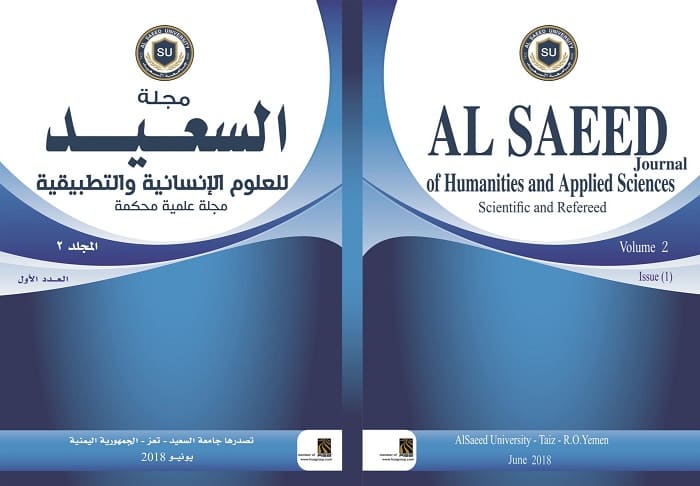The effectiveness of teaching a proposed unit in biotechnology on developing achievement and attitudes towards it among first year secondary students in Taiz Governorate.
DOI:
https://doi.org/10.59325/sjhas.v2i1.45Keywords:
The effectiveness of teaching - biotechnology - the development of achievementAbstract
The effectiveness of suggested unit teaching in biotechnology on achievement of secondary school first grade students in Yemen and their attitudes towards it in Yemen .
The present study aims to prepare of proposed unit in biotechnology of secondary school first grade students in Taiz university in Yemen and knowing its effectiveness in achievement and developing of attitudes towards it.
To achieve aims of the study, the researcher prepared an achievement test and attitudes scale. The sample of study consisted of (37)males students of the 10th grade in high school, in ALMAFER school- ALSHEMAYATEEN district as an experimental sample. The sample of study receiving the two tools before and after the experimental treatment ,then, proposed unit has taught ,and after OF experimental treatment, and the results were statistically manipulated By using (spss). In the light of the results, the researcher cams up with there were statistically significant differences in the mean scores between pretest and posttest application in both of the tow tools in favor of posttest application. In the light of these results, number of recommendations and suggestions are proposed , such as reconsidering in biology curriculum of 10th grade , in the light of subjects and biotechnology issues , and interesting in inclusion of biotechnology concepts in science curriculum in all different instructional stages.
Downloads
Published
How to Cite
Issue
Section
License
copyright is retained by the authors. Articles are licensed under an open access Creative Commons CC BY 4.0 license, meaning that anyone may download and read the paper for free. In addition, the article may be reused and quoted provided that the original published version is cited. These conditions allow for maximum use and exposure of the work.



